The brothers Jack, Walter, Anton and Paul Michaelson, while not the first pioneers of American motorcycling, still managed with their small Minnesota company to introduce significant innovations to motorcycling, all of which were later adopted by the industry. Innovation doesn’t always equal success, though, and while their ‘Minneapolis’ and ‘Michaelson’ brand motorcycles are very rare today, they deserve a place in the motorcycle history as important contributor to the progress of technology.
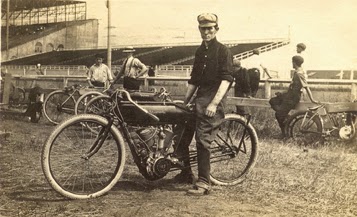
The Michaelson brothers joined the small ranks of Minnesota motorcycle manufacturers in 1908, when they built a brick factory at 526-530 Fifth Street South in Minneapolis, across the Mississippi river from the Thiem Manufacturing Co. (in the ‘twinned’ city of St. Paul). Thiem, who’d been attaching small engines to bicycle frames since 1900, provided the Michaelson’s first engines, which were the ubiquitous 316cc single-cylinder F-heads with ‘atmospheric’ inlet valves. They called their motorcycle ‘Minneapolis’ after their home city. According to Anton’s gradson Ky ‘Rocketman’ Michaelson, Jack was president and treasurer, Walter the vice president, superintendent, and machinist, and A.L.Kirk was secretary.

The Michaelson brothers also purchased V-twin engines from the Aurora Automatic Machinery Co. (Thor), another bedrock of the American motorcycle industry. Aurora had been building Oscar Hedstrom’s Indian engine design since 1901, since his partner George Hendee, who’d been building bicycles since 1889, didn’t have the general engineering facilities required to cast and machine motors. Hendee had all the facilities to build the heavy-duty bicycle chassis, but Aurora built their engines through 1907, after which Indian took over all its own production. Part of Aurora’s deal with Indian was licensed production of the Hedstrom motor, an F-head (inlet over exhaust) with ‘atmospheric’ intake valves, in single and twin-cylinder form, which they sold as their own ‘Thor’ brand, and also found their way into Merkel, Racycle, Reading Standard, and many other makes, each of which contributed to Indian’s (and Aurora’s) profits.
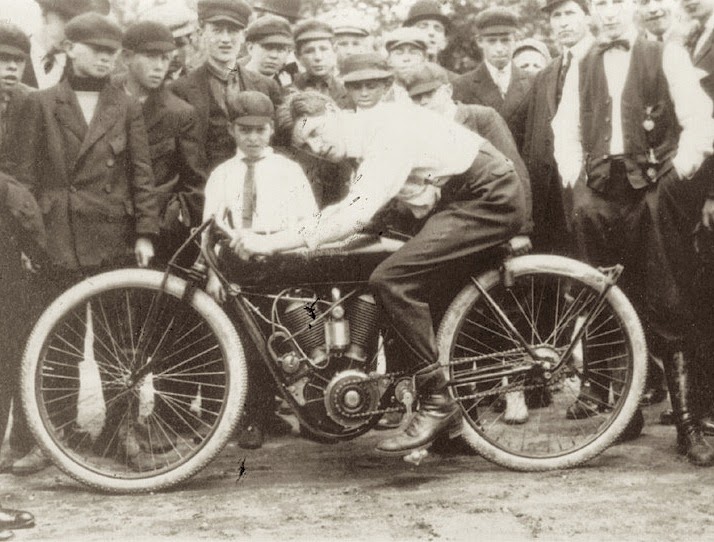
As racing was always the best advertisement, the Michaelson brothers threw their hat into the ring by 1909, participating in various local hillclimbs and track races with single and twin-cylinder Minneapolis racers, both types using the distinctive F-head Thor engines. They won a 5-mile handicap at the very first race at Indianapolis Motor Speedway, on August 15, 1909, one of four motorcycle events that day…although it took another 100 years for motorcycles to return.
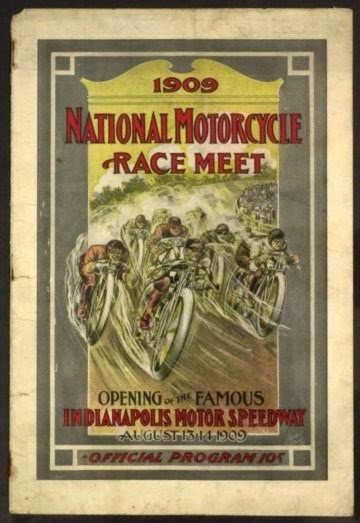
Paul Koutowski won that Indy race on a Minneapolis v-twin with Thor engine, which used a two-speed rear hub – a truly historic occasion, although motorcycle racing at Indy is largely forgotten today: the motorcycle races preceded automobile racing on the track by a year, and the rough original surface led to two crashes in the two-wheel race (one of whom was Jake DeRosier), and two fatalities in the first car race. The surface was repaved with bricks in 1911, and the ‘Brickyard’ was born…with no more bikes until 2009, when world champ Nicky Hayden pottered around on a vintage Indian.
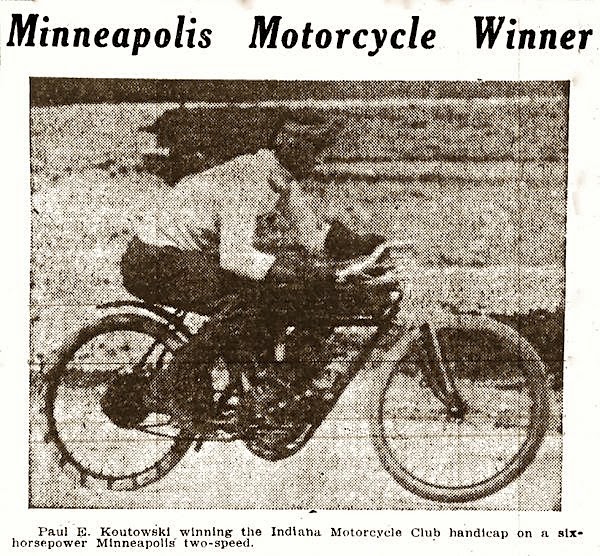
By 1910 Thor had a totally new v-twin engine of more modern design, and their racing development was overseen by William ‘Bill’ Ottoway, who would lead them to some success…enough anyway for Harley-Davidson to hire Ottoway away from Thor around 1913, to head their new racing department, which debuted under his direction in 1914.
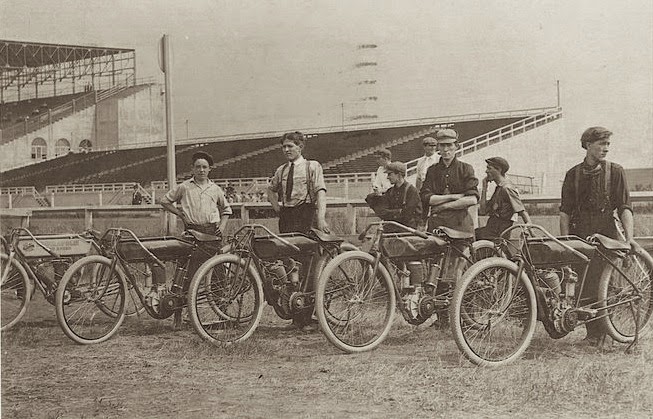
The photographs of Joe Michaelson racing a single and twin-cylinder Minneapolis, in what appears to be a factory racing team in 1910, are from Ky Michaelson’s website, but documentation on this period of Minneapolis racing is scarce. It seems they were successful and won the Riverside Hillclimb, of which the Minneapolis Motorcycle Club (the town or the factory?) was a sponsor. R.S. Porter was the winner on a twin-cylinder, Thor-engined Minneapolis.
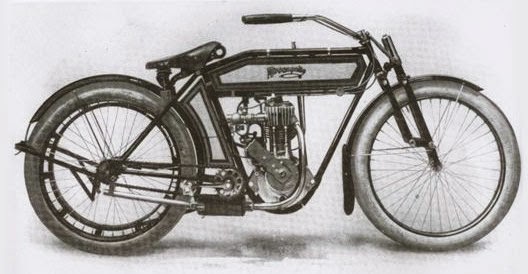
By 1911, the Michaelson brothers had designed their own sidevalve engine, among the first in the motorcycle industry, which relied on the ‘F-Head’ design almost exclusively since Comte DeDion first designed his almost universally adopted motor back in 1889 (licensed to over 150 moto-cycle factories!). The Minneapolis engine was big for a single-cylinder, at 36cu” (590cc), with a bore of 3.5” and stroke of 3.75”, and sold for $265.
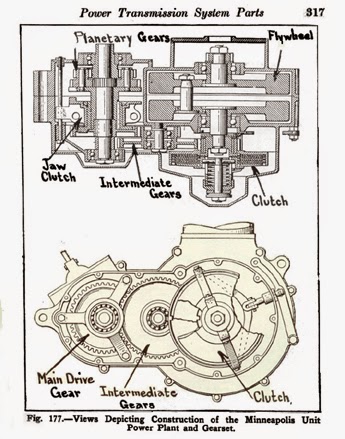
This new Minneapolis was the first American motorcycle to feature a two-speed countershaft (or layshaft) gearbox, and debuted at the Chicago Automobile Show on Feb. 6, 1909. Their two-speed transmission was housed within a unit-construction engine case, which was also a first in the US. The timing chest was one the ‘wrong’ side of the engine, and with valves on the left, the Minneapolis went counter to every other American manufacturer. This seems to be more a matter of brand identity than necessity, as the geared primary drive had an idler gear, meaning the engine and gearbox ran the same direction – unlike the later Indian Scout, which had a two-gear primary drive, and the engine ran ‘backwards’.
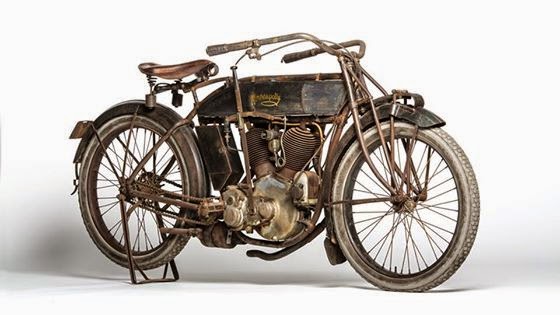
The combined engine/gearbox was a very compact unit, with a gear-driven magneto and all-chain drive. The front forks were a novel leading-link design, very similar to the FN/Sager fork, but a little more robust in construction – later machines all seem to have leaf-sprung forks though. The Minneapolis was designed as a unique machine bristling with advanced features, some of which were not adopted by other American manufacturers until the 1950s!
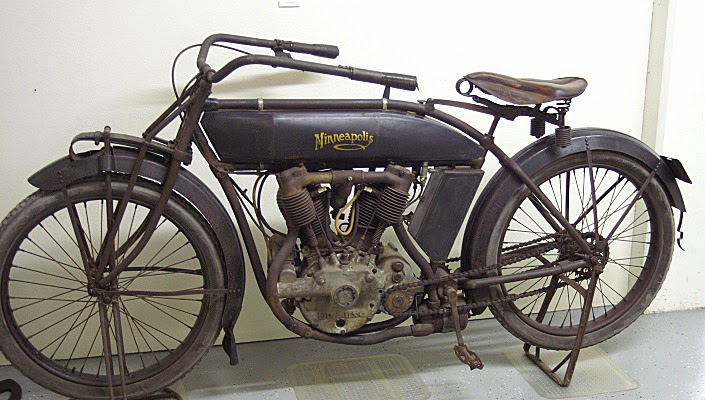
The range of 1912 Minneapolis motorcycles were called the ‘Big 5’, and the single was rated by the factory at 11.5hp, who promised the bike was ‘reliable – quick – efficient’.
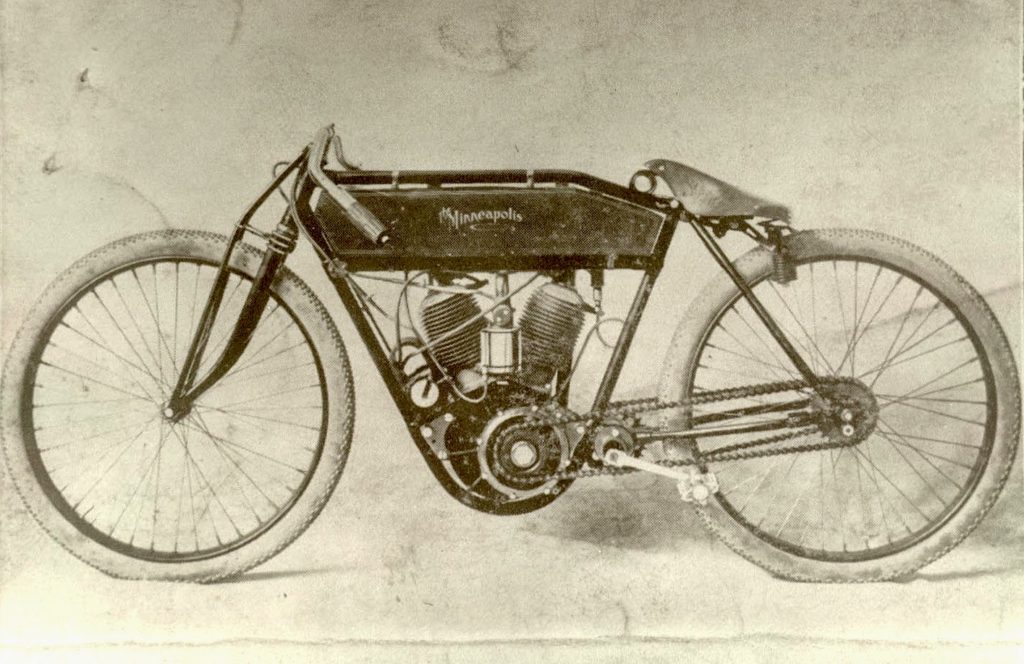
1912 – Then Bettered them for 1913. We set the pace for ourselves! All that we learned, all that past experience had taught us, all that we could glean from riders and the best authorities everywhere, were incorporated into the new 1913 Minneapolis. The new models are not “makeovers”. Nor are they “leftovers”. We simply made our former sturdy models better than ever. If you knew the 1912 Minneapolis you will be more surprised with our newest models. We have ample facilities, plenty of capital and a competent enough organization to fully guarantee the Minneapolis. As to gracefulness of outline and sturdiness of build, the Minneapolis is all the most exacting buyer could demand. But please look below the surface. Let us tell you a few things we have done and some of the departures we stand for. We were among the first to appreciate the advantages offered by a variable speed drive and for the past four years have steadily adhered to this feature. The standard equipment is 28″ wheel, but in lieu of the 2.5″ tire formally used, the 1913 standard is 2.75”. The latest type of knock-out front axle and Thor brakes have been adopted…”
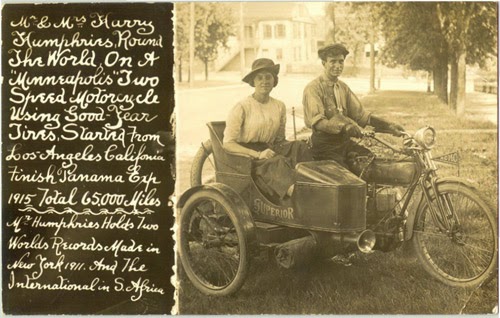
Beginning in 1912, to ‘satisfy all demands’, the Michaelson brothers added a v-twin to their range, with the well-known Spacke F-head. The Spacke motor was special for the Minneapolis, as the right-side crankcase half incorporated the gear drive for the Minneapolis primary case, and their 2-speed gearbox was bolted directly onto the rear of the crankcase. Thus, the Spacke engine was placed ‘backwards’ relative to the many other makes using this motor (Sears, Dayton, DeLuxe, etc), but the magneto shaft drive still faced ‘forwards’, as this crankcase casting was a mirror of that used on the Sears and Dayton. Curiously, the ‘Eagle’ motorcycle used a Spacke engine with this same magneto configuration, but with the engine placed in the ‘normal’ direction, so the mag was behind the motor. Perhaps after Spacke made the ‘custom’ crankcases for Minneapolis, they were able to sell a few to Eagle, and occasion to be at least a little different from Sears and Dayton?
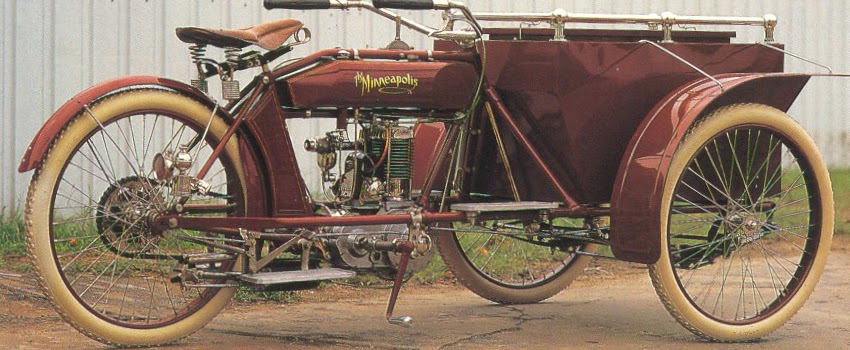
By the time the US entered WW1 (late 1914), any American motorcycle manufacturer which hadn’t jumped the bandwagon for military contracts found themselves struggling with rapidly escalating labor and materials costs – inflation caused by the a massive US gov’t injection of cash into the economy for the war effort. As a result, dozens of US motorcycle makers went out of business during WW1, and the range of motorcycles available shrank to just a handful post-1918, which was further knocked by a sudden availability of cheap war surplus motorcycles. The Michaelson brothers sold the company in April 1914 to the Wilcox Motor Co., with new president Lee W. Oldfield, an automobile racing driver, but it doesn’t appear to have lasted much later than 1914, despite a $50,000 injection of capital from I.A. Webb, of Deadwood, SD.
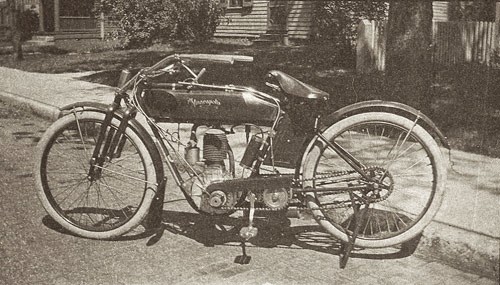
Related Posts
July 8, 2017
The Vintagent Trailers: Mancini, The Motorcycle Wizard
The mechanic that helped debut five of…
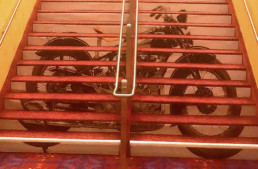
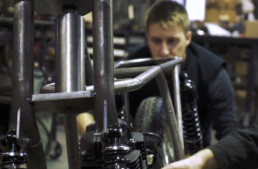
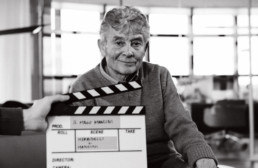
Well done. Thank you.
Back some time in the early 1970s I used to know some of the mechanics at Karl’s BMW/BSA in Minneapolis. I remember one of them telling me how one of them had acquired an old Minneapolis motorcycle and set about restoring it. Somehow the group knew of someone who had worked at the factory or had some connection to the factory, and they thought it would be a neat surprise to show him their restored Minneapolis. Come the day, he took a look at it and just said, “Yeah, that looks about right.” 🙂
Don, was your father Roy by any chance?
Roy was my uncle.
John egeberg was my dad